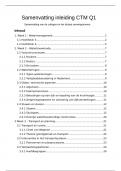Summary
Samenvatting Advanced Statistics H1-H6,H10.1-10.4
- Module
- Institution
- Book
English summary of the 7th edition of the book “An introduction to statistical methods & data analysis” by R. Lyman Ott and Michael Longnecker. Figures included. Used for the Advanced Statistics course given at WUR. English summary of the 7th edition of the book “An introduction to statis...
[Show more]





